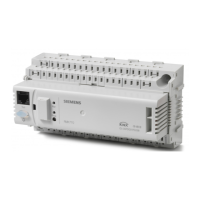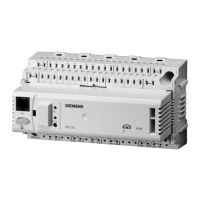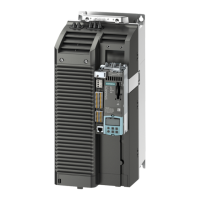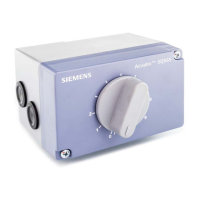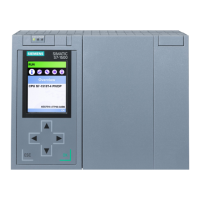106/120
Building Technologies Basic documentation: Communication via the KNX bus CE1P3127en
HVAC Products Appendix 30.08.2007
9.5 Supply chains
The applications in the Synco 700 type RMU/RMH controllers consist of HVAC
functional units. These functional units are based on the supply chains in buildings.
A "supply chain" consists of at least energy generator and an energy consumer, but
often of an energy generator, an energy distributor and an energy consumer.
1. One energy generator with one distributor and one energy consumer.
2. One energy generator, two distributors in series and one energy consumer
3. Several energy generators, distributors and energy consumers in parallel
Source Distributor Consumer Coordinator Dispatcher
3127Z33en
C1
C1 C2
D1
D1 D2
S1 S2
1.
2.
3.
S..
C..
D..
S1
SD
C
D2
Down =
stream
Up =
stream
D1
C1
S1
C
o
n
s
u
m
e
r
s
i
d
e
S
o
u
r
c
e
s
i
d
e
The "Coordinator" and "Dispatch Handler" are defined as logical elements in the
supply chain. Their role is as follows:
• The Coordinator collates the demand signals from all the downstream links in
the chain, and delivers the resulting demand signal to the link upstream. The
Coordinator also reports the operational status of the upstream links to the
downstream link.
• From resulting demand signals from the energy consumers, the Dispatch
Handler determines which generators, and how many, need to be enabled.
The above illustrations of supply chains show the following:
• Energy consumer has one output to the distribution component
• Energy generator has one input from the distribution component
•
Energy consumer transmits heating/cooling demand to the upstream
distribution component
•
Energy generator receives heating/cooling demand from the upstream
distribution component
The supply-chain
structure
Supply chain outputs
and inputs
Supply/demand

